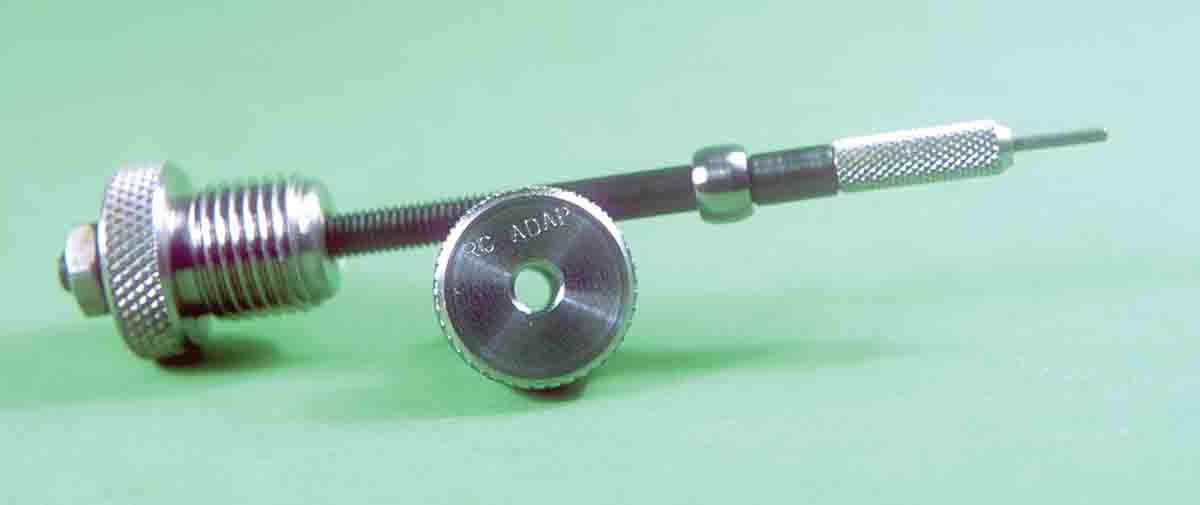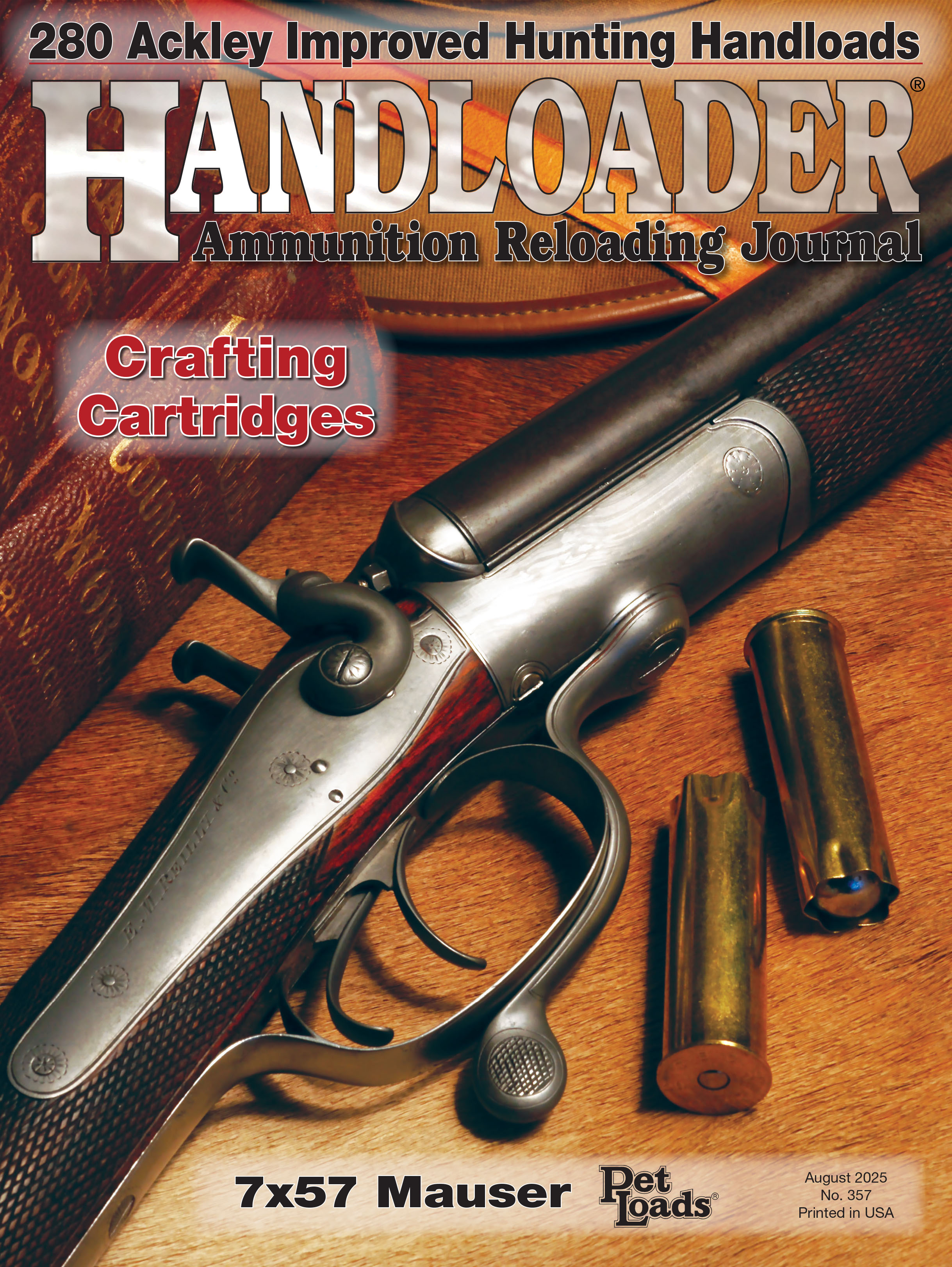Product Test
Lyman Deluxe Carbide Expander/Decap Die Rod
whatsnew By: R.H. VanDenburg, Jr. |
Years ago Lyman Products decided to take a fresh look at the whole sizing/decapping business. Reasoning that the tungsten carbide inserts used in some straight-walled handgun die sets are so hard and slick that cases need not be lubricated before sizing, a tungsten carbide expander button would certainly facilitate pulling it through the case neck after the initial sizing. The result would be less potential case stretching and an overall smoother operation.
From a manufacturing prospective, allowing the expander button to free-float on the die rod would facilitate manufacture as well as allowing the button to self-center itself in the case neck as it is being drawn from the die.

Further business considerations suggested potentially greater sales if the product could be used with other brands of full-length sizing dies. To accommodate this, Lyman includes two adapters, one for use with Lyman full-length sizing dies and another for use with RCBS dies. In attempting to check this out, I found that with the Lyman adapter in place, the die rod also fits Redding dies, and with the RCBS adapter in place, the assembly also fits Forster dies. Neither adapter will fit Lee or Hornady dies.
When I first noticed the Deluxe Carbide Expander/Decap Die Rod, I asked Tom Griffin, Lyman’s head of its ballistic laboratory, to send me one in .30 caliber. According to the packaging, the .30-caliber Deluxe Carbide Expander/Decap Die Rod is suitable for use in the .30-30 Winchester, .300 Savage, .308 Winchester, .30-06 and .300 Winchester Magnum. Surely this is but a partial, however symbolic, list and in the accompanying instructions are included the .300 WSM and the .300 Weatherby Magnum, albeit listed in the column containing 7mm cartridges. There must, of course, be others, assuming dies are available from the appropriate manufacturers.
My first effort was to retrieve a micrometer and start measuring. The die rod itself measures .150 inch in diameter. The sleeve is .325 inch long and .208 inch in outside diameter. The expander button is .205 inch long, beveled at both ends, and .307 inch in outside diameter. Comparing this expander button diameter to several other .30-caliber buttons, including one that is titanium-oxide coated, I found all the others, well worn from years of use, measured right at .3065 inch. Whether this means they were all once .307 inch and that this new carbide button will one day measure .3065 inch, I don’t know.
My general approach to sizing cases involves at least a perfunctory cleaning inside and out and sometimes a trip through the tumbler. Either way, with bottleneck cases, I lube the outside case walls and dip the case necks in a dry lubricant, not only to facilitate sizing but also to minimize the likelihood of case stretching. In several comparisons of the Lyman expander/decapper to other makes using the same size die body, the Lyman expander did, in fact, appear to produce a somewhat smoother operation. Lyman’s placement of the expander button, when above the sleeve, also seems to provide a mechanical advantage as the button enters the neck, further assuring a smooth passage.
Not of least concern when considering expander/decapper assemblies is the matter of case neck runout. While the free-floating of the Lyman expander button would certainly assist in minimizing runout, perhaps technique is of greater importance. Assuming proper technique in centering the expander/decapper assembly before locking it down, the free-floating expander button can only help. In making several comparisons of different expander assemblies, the Lyman Deluxe Carbide Expander/Decap Die Rod equaled or bettered competing products. That, and a smoother operation, makes this accessory worth a look (www.lymanproducts.com).


